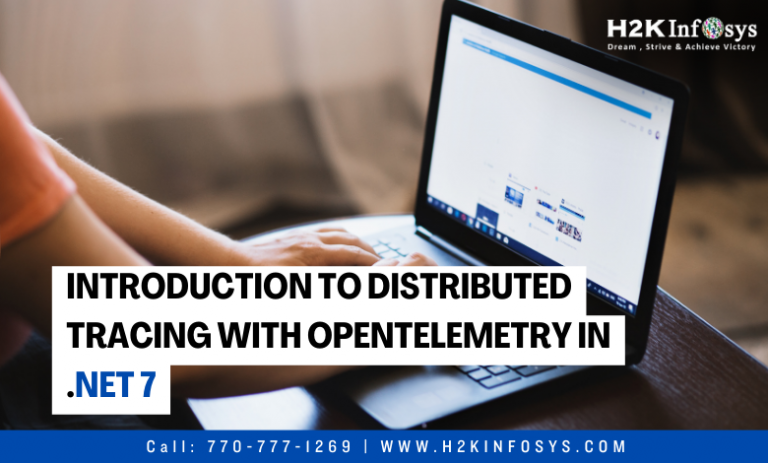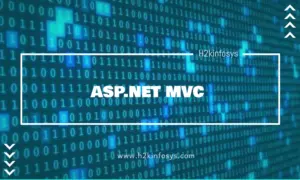Despite gathering more data than ever before, enterprises might not be making the most of it. Most of the time, companies have no idea what information they have or how to use it. OpenTelemetry .NET can be helpful here.
OpenTelemetry makes it easier to gather and analyse data from several sources at once, empowering companies to make better operational decisions. Businesses have changed how they approach observability with OpenTelemetry. With its proficiency in debugging, alerting, and troubleshooting applications, OpenTelemetry is positioned to be the instrumentation of the future.
A collection of tools and libraries for distributed tracing and monitoring are included in OpenTelemetry. The Cloud Native Computing Foundation (CNCF) developed it to offer a uniform method of instrumenting code for tracing purposes. OpenTelemetry works with any programming language and lets you get information about how requests go through your system. It offers exceptional support for .NET. To learn more about .NET, you can check out our online .NET training.
It is possible to generate a trace of the requests’ handling using the data gathered. This is helpful in identifying mistakes or performance problems. Libraries are available for ASP.NET Core and other frameworks in addition to .NET. It’s simple to instrument your code and gather trace data with these packages. In general, OpenTelemetry is an excellent resource for distributed tracing and monitoring. It’s easy to use with .NET and it has good support for various frameworks.
What Is Distributed Tracing?
A method for capturing events across several services to diagnose problems and improve performance is called distributed tracing. It entails following the execution of each system component and documenting details about each step in order to comprehend the operation of a distributed system. It is possible to reconstruct the system’s execution route by using this information.
Distributed tracing is useful for deciphering the behaviour of intricate distributed systems and for locating bottlenecks in a system. Additionally, it can be applied to the diagnosis of distributed system faults. This might assist you in understanding the operation of your application and identifying the underlying causes of any performance issues.
What Is Observability .NET? Why Is It Important?
The ability of a system to measure its current status using metrics, traces, and log files is known as observability. By gathering information and keeping an eye on dispersed systems proactively, observability can increase operational visibility. Based on an application’s long-term performance in a production environment, it can find pertinent data.
The three main components of observability are logging, tracing, and metrics.
What Is Open Telemetry? Why Should I Use It?
An open-source distributed tracing framework for .NET 7 is called OpenTelemetry. Using an open-source framework, it gathers, stores, and analyses telemetry data (metrics, logs, and traces) and offers a high-level API for distributed tracing and metrics that can be used by serverless, microservices, and monolithic applications, among other environments.
As part of the OpenTracing standard that the CNCF OpenTracing Working Group had adopted, Microsoft first released OpenTelemetry in 2016 as a .NET library for distributed tracing and metrics.
Since then, it’s been widely embraced by different projects and enterprises across multiple industries, including Microsoft’s own Azure services and Azure Functions. Community-driven and licensed under Apache 2.0. OpenTelemetry is a project. It supports ASP.NET 5+, .NET Core 1.1 or later, and any other .NET framework that implements the OpenTracing API. It can be found on GitHub and NuGet.
For the purpose of gathering and storing telemetry data, such as traces, metrics, and logs, OpenTelemetry is a set of APIs, SDKs, tooling, and integrations. A component that collects, processes, and exports telemetry data is known as a collector in OpenTelemetry.
Correlating events that take place during the execution of your application is possible using OpenTelemetry. Events can be correlated according to:
- Execution context: The traceId of an event can be used to correlate logs and traces.
- Execution time: Based on the event’s timing, or when it happened, you can correlate logs and traces.
- Telemetry Origin: The service name, service instance, or service version can all be used to correlate events.
Why Open Telemetry?
OpenTelemetry is a new distributed tracing system that can be applied across several platforms and programming languages. The following are just a few advantages of utilising OpenTelemetry for distributed tracing:
- It has strong community support and is open source.
- It integrates well with other widely used open-source tracing systems, such as Jaeger.
- With its various capabilities, instrumenting your code and gathering trace data is made easy.
- It provides robust support for Microsoft technologies such as .NET.
OpenTelemetry is a fantastic choice to take into consideration if you’re searching for a distributed tracing system to use in your .NET apps.
Components of OpenTelemetry
There are three parts to the OpenTelemetry collector: receivers, processors, and exporters.
Receivers
Data is gathered by an OpenTelemetry receiver and sent to a collector. A receiver may be push- or pull-based and support one or more data sources. Within the OpenTelemetry pipeline, data is passed from receivers to processors and exporters after being converted from a given format to an internal format.
Processors
Data is processed by a processor, an optional part of the collection pipeline, before being sent to an exporter. When you get telemetry data from the collector, you can use processors to batch-process, sample, convert, and enrich the data before exporting it.
Exporters
Metrics and traces generated by OpenTelemetry can be exported to multiple back-ends. Data can be exported to one or more back-ends or destinations, such as Azure Monitor, Jaeger, Splunk, Prometheus, etc., using an exporter, which can operate in a push or pull fashion.
Conclusion An open-source project called OpenTelemetry offers tools for dispersed tracing. Libraries for several programming languages, including .NET, are included. You may use OpenTelemetry to set up apps for distributed tracing. Additionally, it offers a collection of APIs that may be used to get trace information from several sources. Check out our .NET courses online to learn more.





























